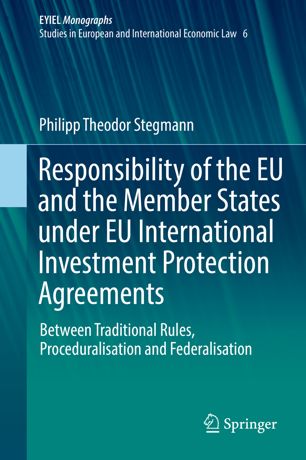

Most ebook files are in PDF format, so you can easily read them using various software such as Foxit Reader or directly on the Google Chrome browser.
Some ebook files are released by publishers in other formats such as .awz, .mobi, .epub, .fb2, etc. You may need to install specific software to read these formats on mobile/PC, such as Calibre.
Please read the tutorial at this link: https://ebookbell.com/faq
We offer FREE conversion to the popular formats you request; however, this may take some time. Therefore, right after payment, please email us, and we will try to provide the service as quickly as possible.
For some exceptional file formats or broken links (if any), please refrain from opening any disputes. Instead, email us first, and we will try to assist within a maximum of 6 hours.
EbookBell Team

5.0
58 reviewsThis book provides a comprehensive portrait of how international responsibility of the EU and the Member States is structured under the EU’s international investment protection agreements. It analyses both the old regime as represented by the Energy Charter Treaty and the new regime as represented by the new EU investment treaties, such as CETA, TTIP, the EU-Singapore Agreement and the EU-Vietnam Agreement. The international responsibility of the EU, being a “special” international organisation, is in and of itself an important and challenging topic in public international law. However, in the context of international investment law, and especially with regard to the emerging new EU investment treaties, the topic is largely unexplored and represents new terrain. The book promotes the development of law in this area and provide a springboard for further research.
The book puts forth the thesis that the determination of the EU or a Member State as respondent in a dispute under the new EU investment treaties has a substantive effect on the respondent’s international responsibility. The international law effects of the respondent determination will surely be one of the central topics in future debates on the new EU investment treaties. The book further compares the EU regulation that allocates financial burdens between the EU and the Member States arising out of international investment disputes with the only other genuinely existing allocation system in federal states to date, namely that of Germany. The book finally reveals many shortcomings of the new EU responsibility regime in international investment law and provides some suggestions on how they can best be remedied.